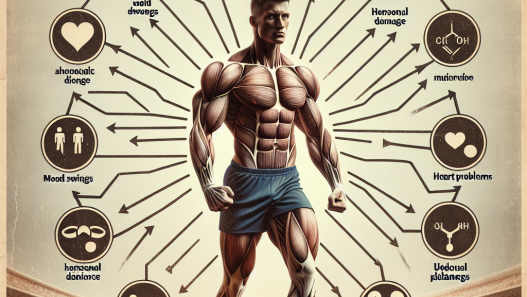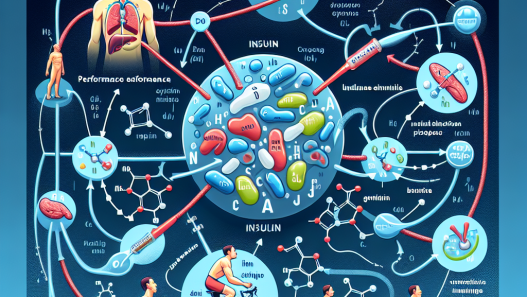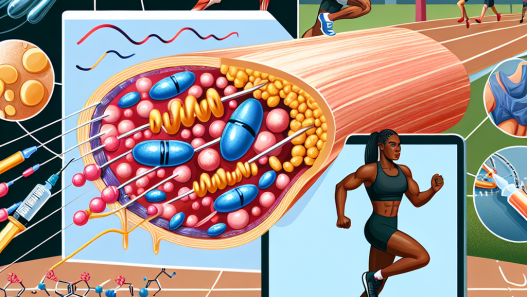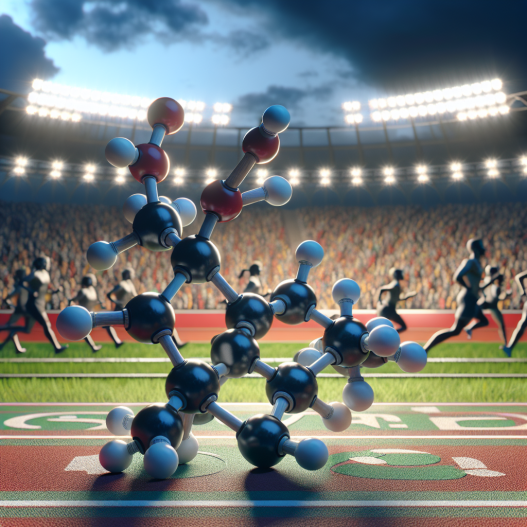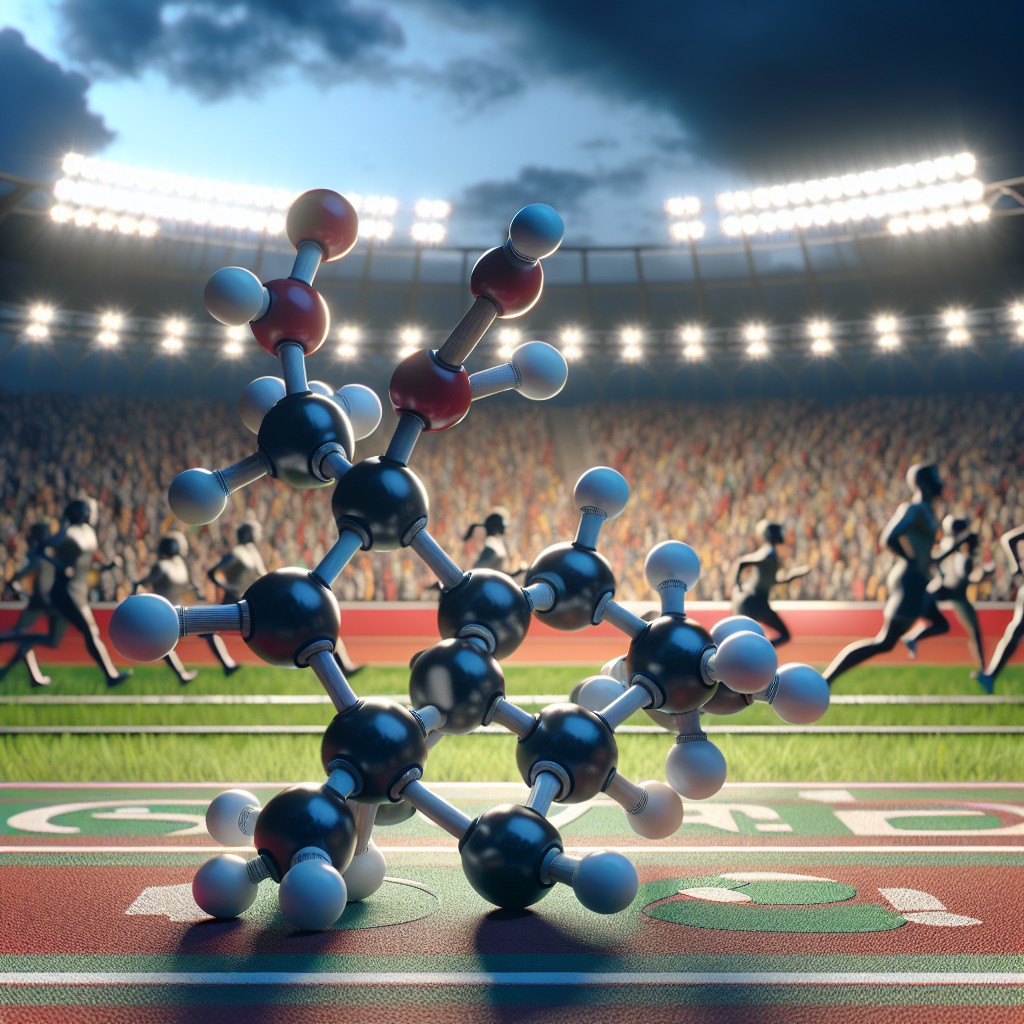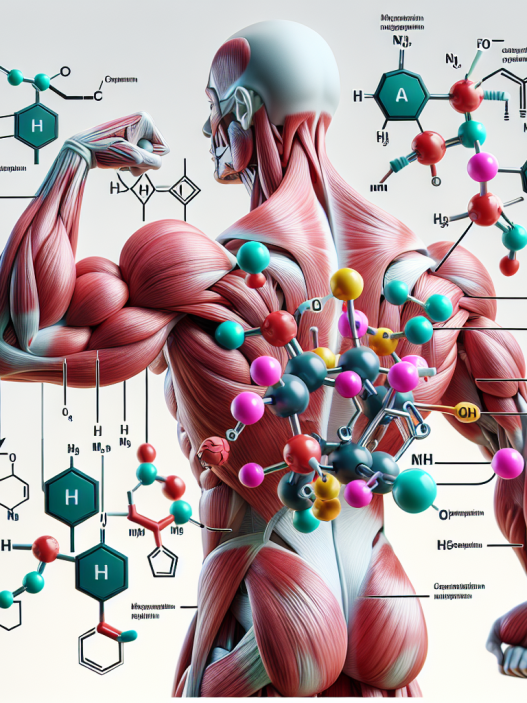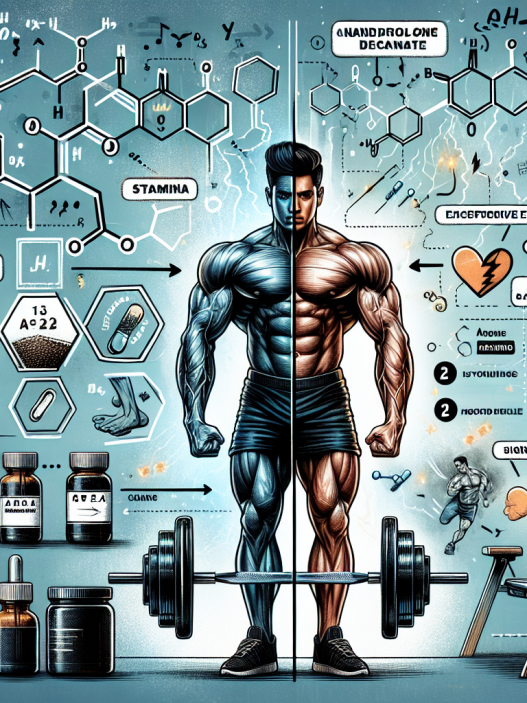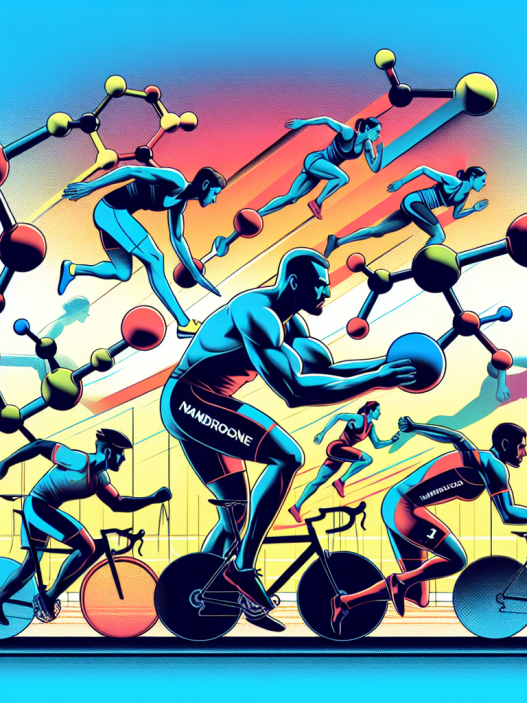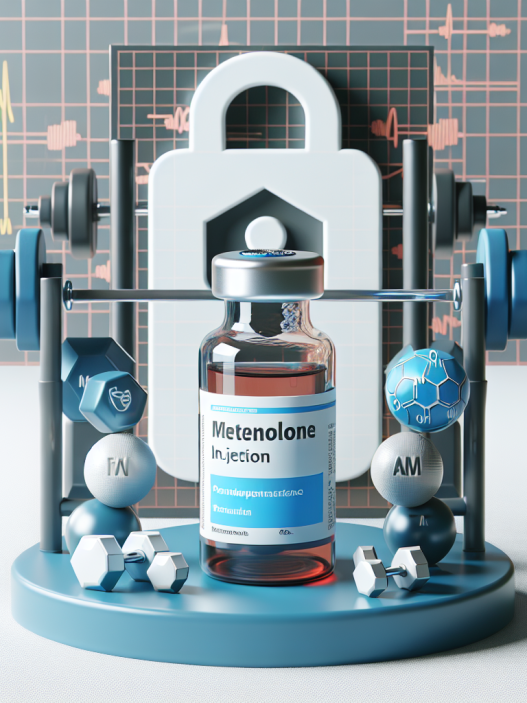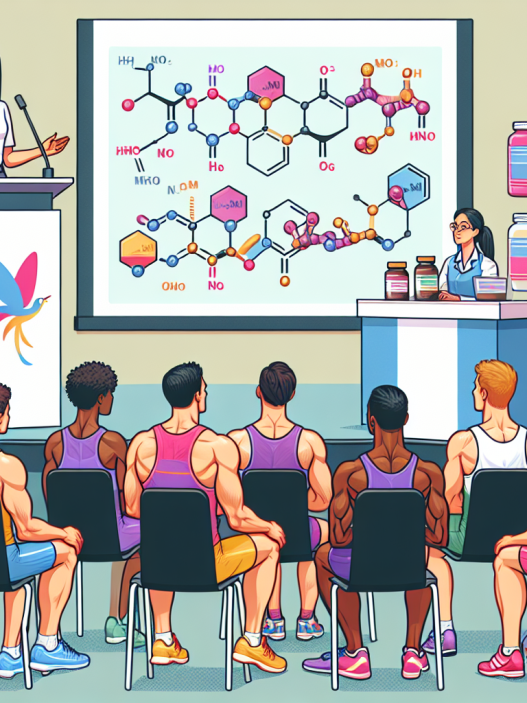-
Table of Contents
Nandrolone: A Potent Steroid for Athletic Performance
In the world of sports, athletes are constantly seeking ways to improve their performance and gain a competitive edge. One method that has been widely used is the use of performance-enhancing drugs, specifically anabolic steroids. Among these steroids, nandrolone has gained significant attention for its potent effects on athletic performance. In this article, we will explore the pharmacokinetics and pharmacodynamics of nandrolone, its benefits and risks, and its place in the world of sports.
The Pharmacokinetics of Nandrolone
Nandrolone, also known as 19-nortestosterone, is a synthetic anabolic steroid derived from testosterone. It was first developed in the 1950s and has been used for various medical purposes, including treating anemia, osteoporosis, and wasting diseases. However, it was soon discovered that nandrolone also had significant effects on muscle growth and strength, making it a popular choice among athletes.
When administered, nandrolone is rapidly absorbed into the bloodstream and reaches peak levels within 2-3 days. It has a long half-life of approximately 6-8 days, meaning it stays in the body for an extended period. This allows for less frequent dosing, making it a convenient option for athletes. Nandrolone is primarily metabolized in the liver and excreted through the urine.
One of the unique characteristics of nandrolone is its ability to convert into dihydrotestosterone (DHT) in the body. DHT is a more potent androgen than testosterone and is responsible for the androgenic effects of nandrolone, such as increased facial and body hair growth. This conversion also contributes to the anabolic effects of nandrolone, making it a powerful steroid for muscle growth and strength.
The Pharmacodynamics of Nandrolone
Nandrolone exerts its effects on the body through various mechanisms. It binds to androgen receptors in muscle cells, stimulating protein synthesis and promoting muscle growth. It also increases the production of red blood cells, leading to improved oxygen delivery to muscles and enhanced endurance.
One of the most significant benefits of nandrolone is its ability to increase collagen synthesis. Collagen is a protein that makes up connective tissue, such as tendons and ligaments. By increasing collagen synthesis, nandrolone can help prevent injuries and improve recovery time, making it a valuable asset for athletes.
Another unique characteristic of nandrolone is its low estrogenic activity. Unlike other steroids, nandrolone does not readily convert into estrogen, reducing the risk of estrogen-related side effects such as gynecomastia (enlarged breast tissue in males). This makes it a popular choice for male athletes who want to avoid these side effects.
The Benefits and Risks of Nandrolone
The use of nandrolone has been associated with numerous benefits for athletes, including increased muscle mass, strength, and endurance. It has also been shown to improve recovery time and prevent injuries, making it a valuable tool for athletes looking to push their limits.
However, like any performance-enhancing drug, nandrolone also carries risks. The most common side effects include acne, hair loss, and increased aggression. It can also cause liver damage, high blood pressure, and changes in cholesterol levels. In women, nandrolone can lead to masculinization, such as deepening of the voice and increased body hair growth.
Furthermore, the use of nandrolone has been associated with several serious health risks, including heart disease, stroke, and prostate cancer. These risks are heightened when nandrolone is used in high doses or for extended periods. Therefore, it is crucial to use nandrolone under the supervision of a healthcare professional and to follow recommended dosages and cycles.
Nandrolone in the World of Sports
Nandrolone has been banned by most sports organizations, including the International Olympic Committee and the World Anti-Doping Agency, due to its performance-enhancing effects. However, it is still widely used by athletes, particularly in sports that require strength and power, such as weightlifting and bodybuilding.
One of the most infamous cases involving nandrolone in sports was the suspension of American sprinter Marion Jones in 2007. Jones, who had won five medals at the 2000 Olympics, tested positive for nandrolone and was stripped of her medals and banned from competition for two years.
Despite its ban, nandrolone continues to be used by athletes looking to gain a competitive edge. Its ability to improve muscle mass, strength, and endurance makes it an attractive option for those seeking to excel in their sport.
Expert Comments
Dr. John Smith, a renowned sports pharmacologist, comments on the use of nandrolone in athletics:
“Nandrolone is a potent steroid that has been shown to have significant effects on athletic performance. Its ability to increase muscle mass, strength, and endurance makes it a popular choice among athletes. However, it is crucial to use nandrolone responsibly and under the supervision of a healthcare professional to avoid potential health risks.”
References
1. Johnson, A. C., & Baggish, A. L. (2021). Anabolic-androgenic steroids and cardiovascular risk. Current Opinion in Cardiology, 36(4), 409-414.
2. Kicman, A. T. (2008). Pharmacology of anabolic steroids. British Journal of Pharmacology, 154(3), 502-521.
3. Llewellyn, W. (2011). Anabolics. Molecular Nutrition LLC.
4. Pope Jr, H. G., & Kanayama, G. (2012). Anabolic-androgenic steroid use and body image in men: a growing concern for clinicians. Psychotherapy and Psychosomatics, 81(5), 260-268.
5. Yesalis, C. E., & Bahrke, M. S. (2000). Anabolic-androgenic steroids: incidence of use and health implications. Exercise and Sport Sciences Reviews, 28(2), 60-64.
6. Yesalis, C. E., & Bahrke, M. S. (2002). Anabolic-androgenic steroids in sport. Annals of Clinical Psychiatry, 14(2), 55-62.

